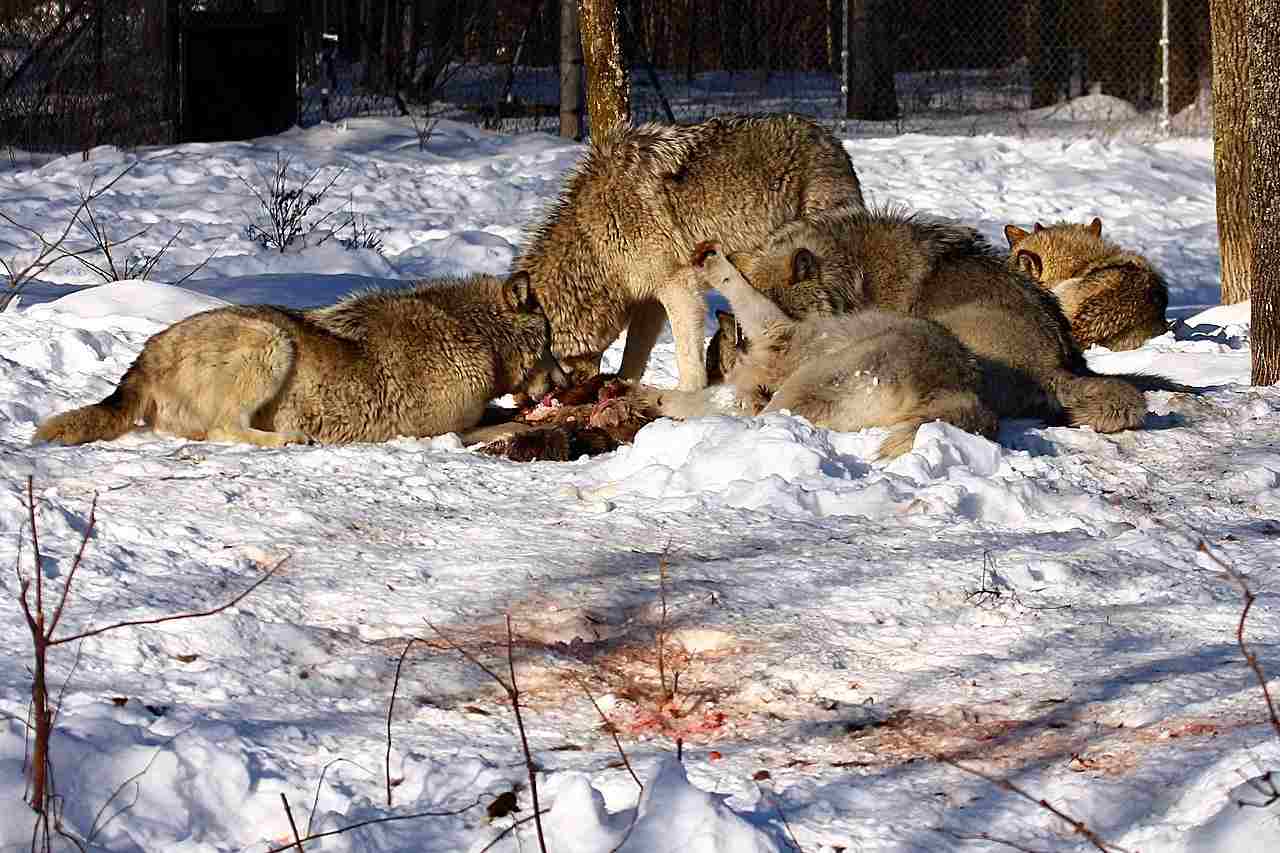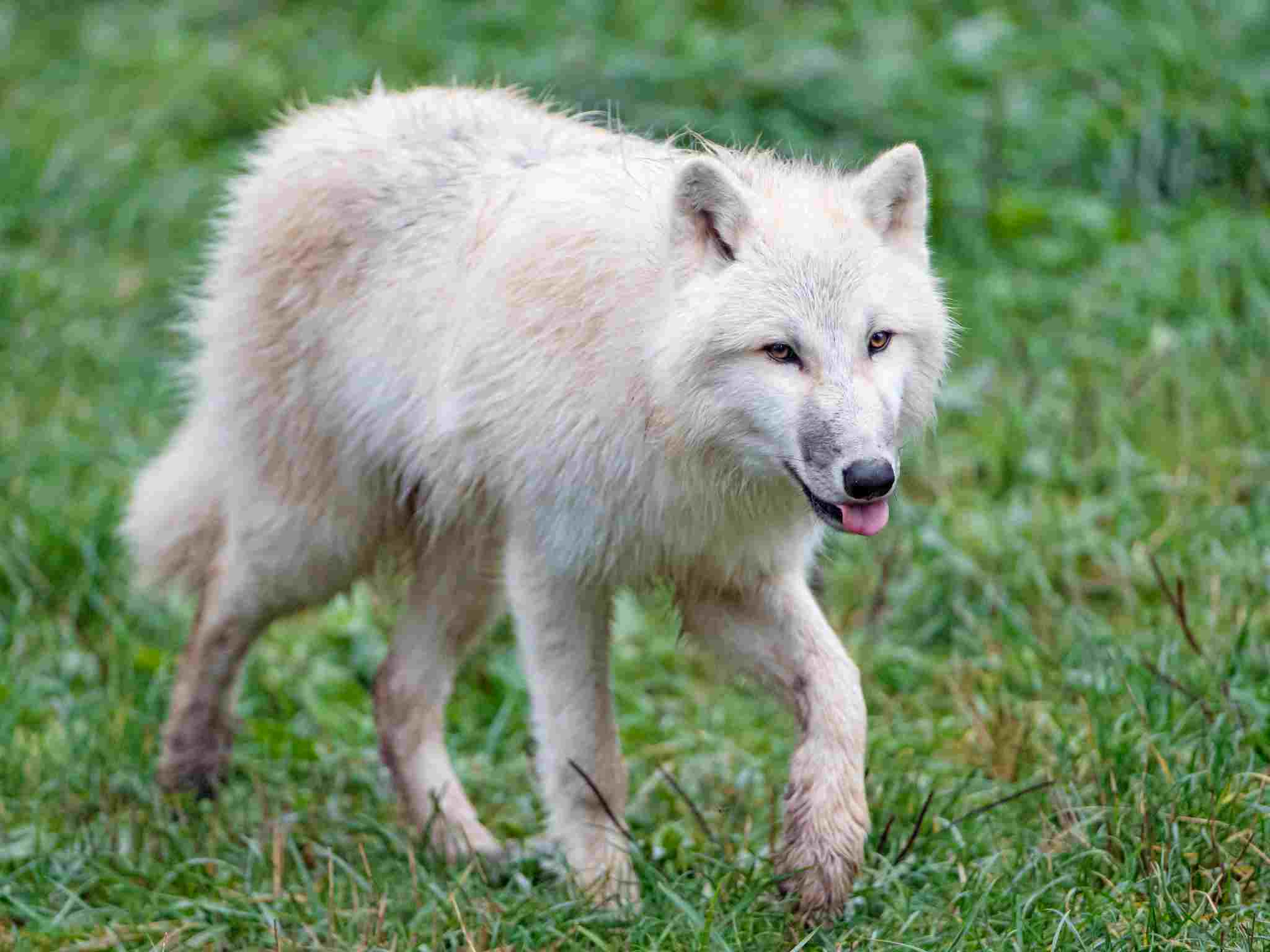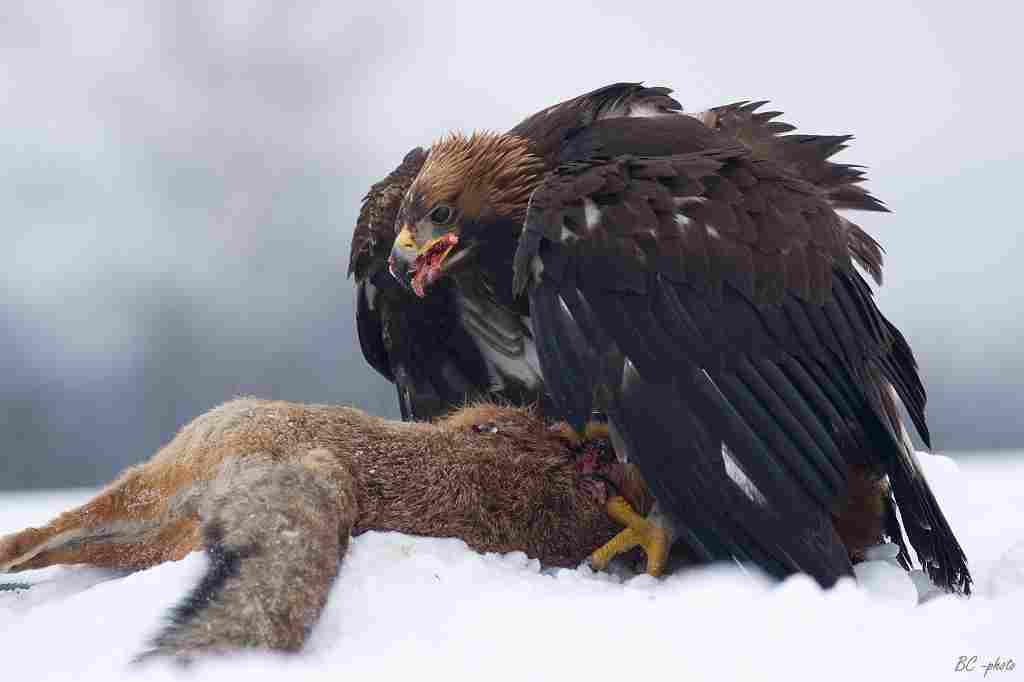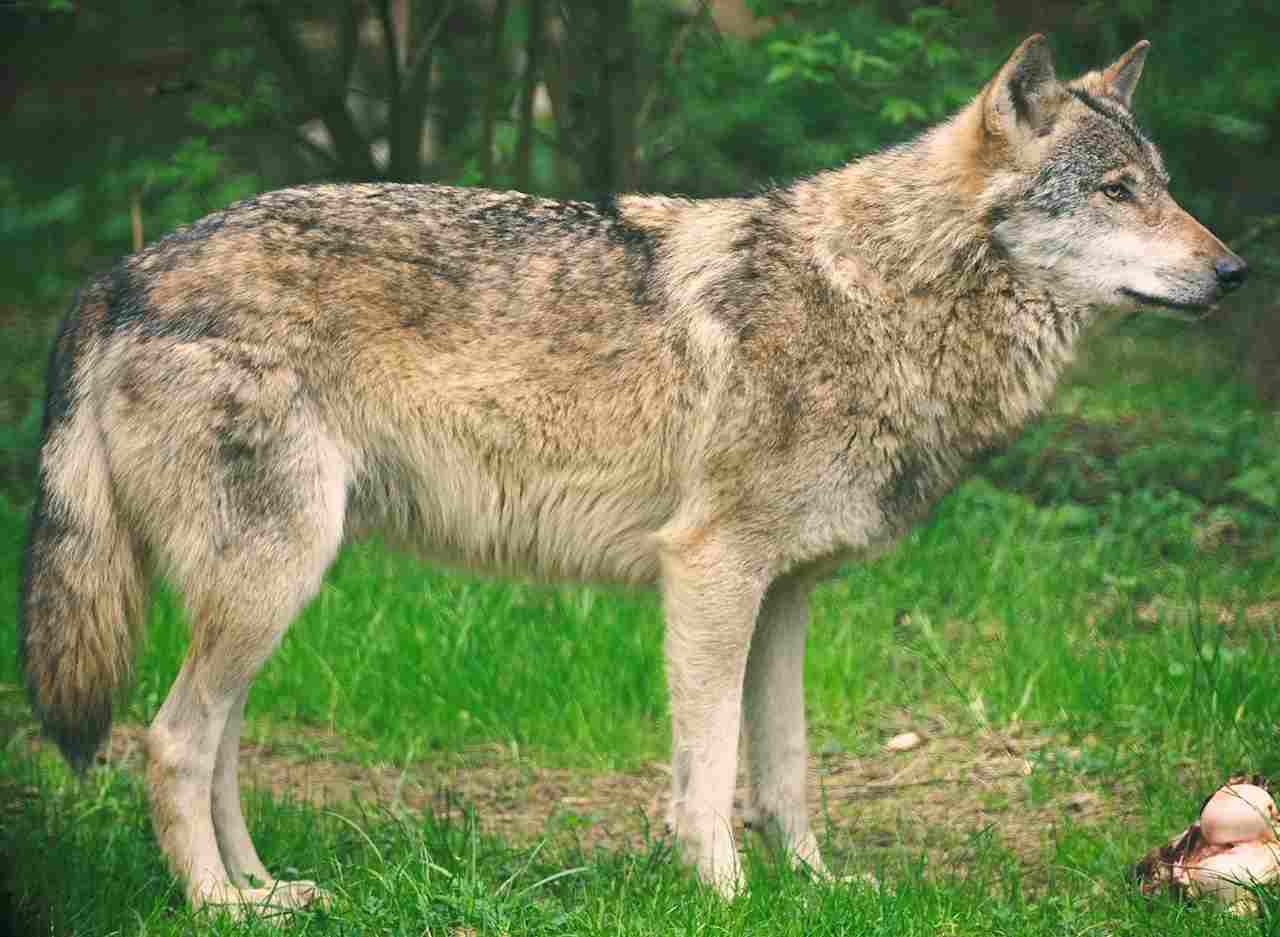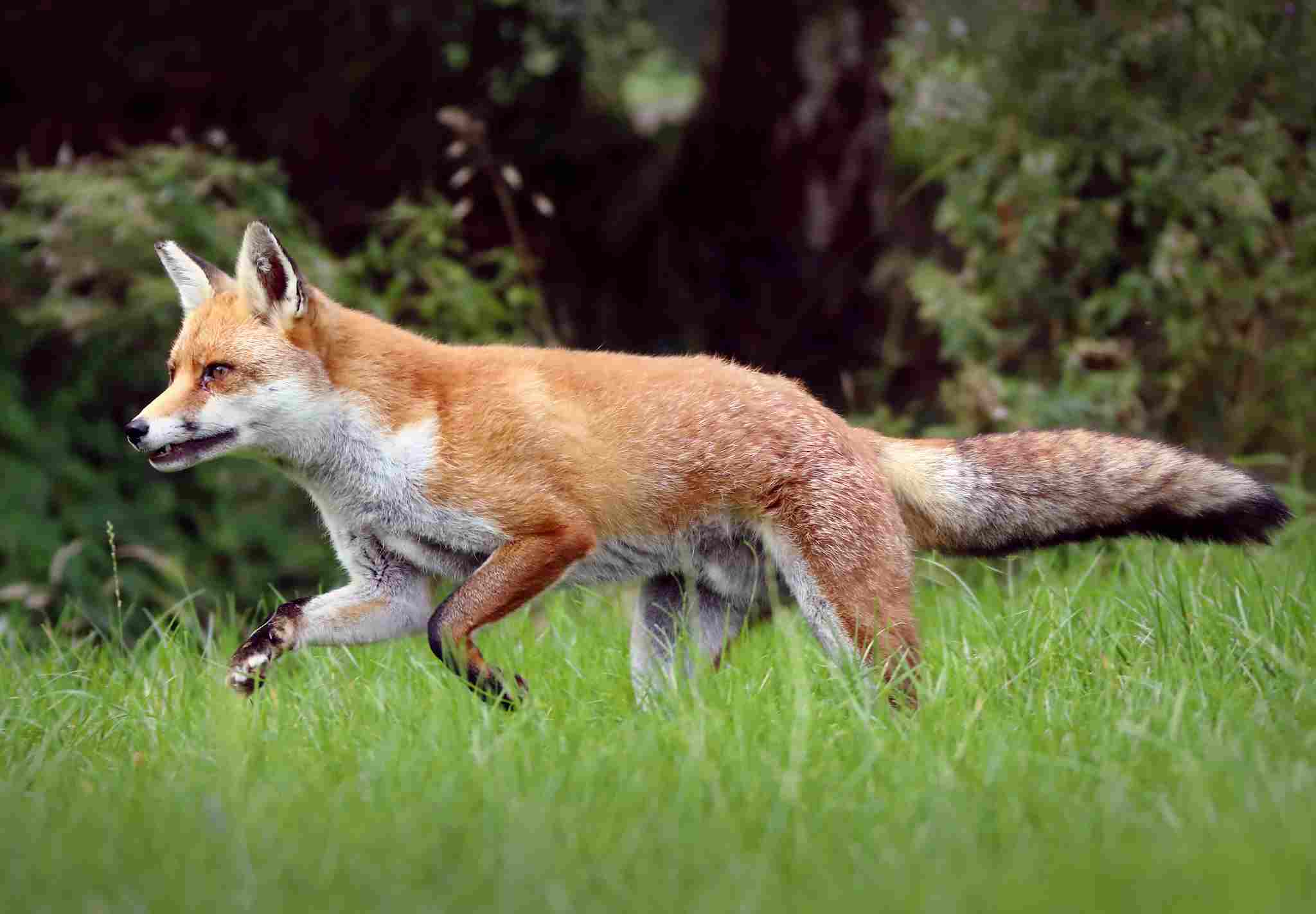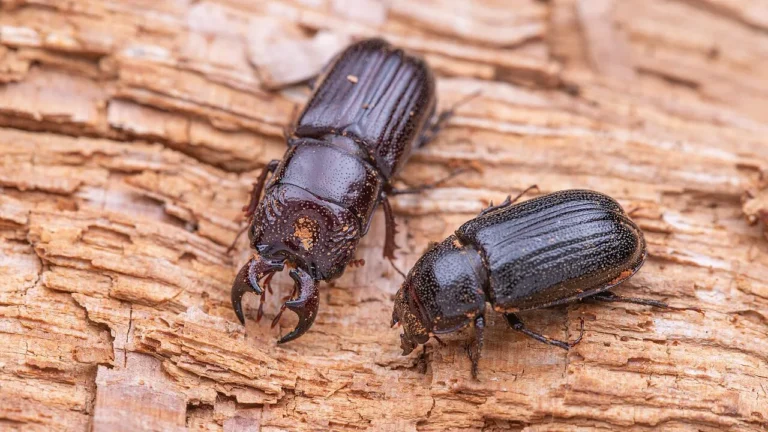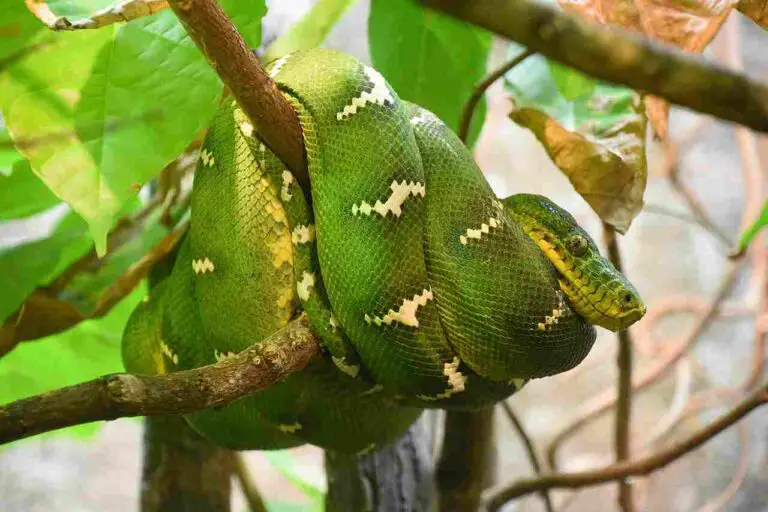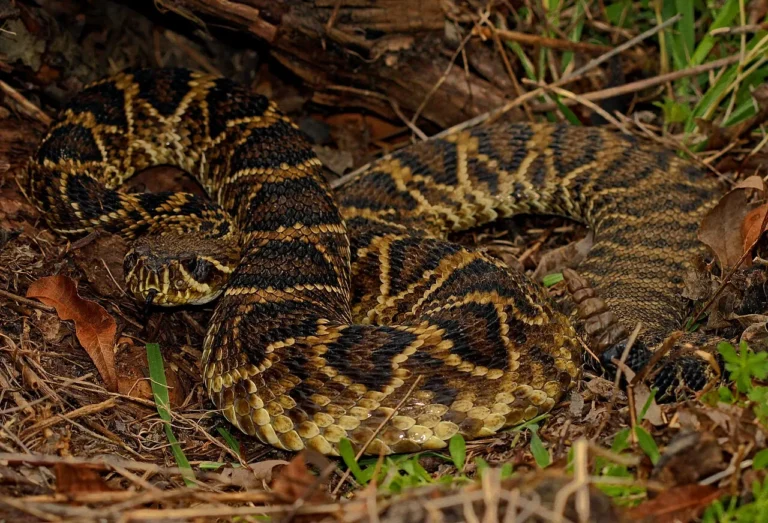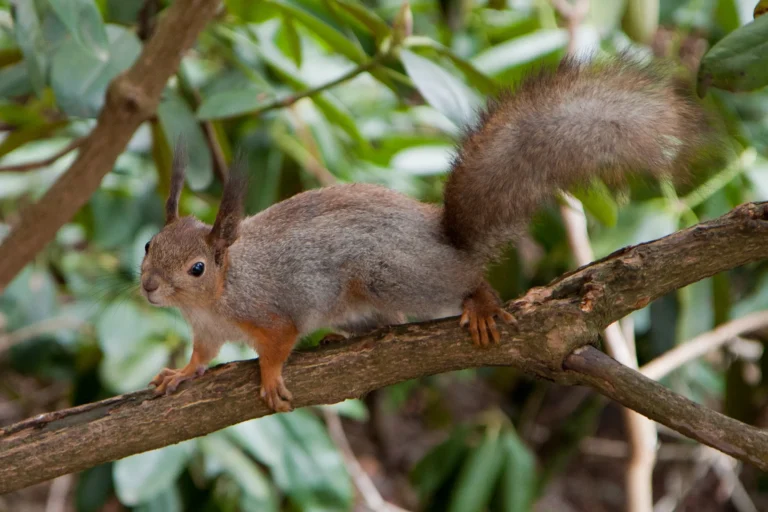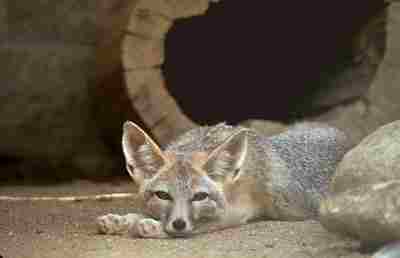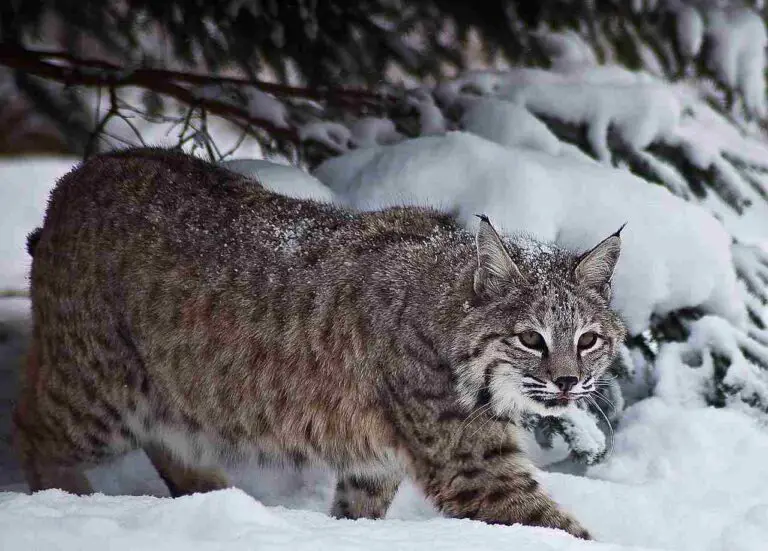Snow Leopards’ Predators and Prey Discussed
Snow leopards’ predators are mostly humans, because snow leopards are apex predators themselves and face no natural threat of predation from other animals in their habitat.
In some cases, snow leopards are killed by other predators, or by large prey hole hunting, but these cases are rare. Also, their carcasses can by scavenger by animals like foxes, wolves, and eagles.
What are the Predators of the Snow Leopard?
Snow leopards, being apex predators, face minimal predatory threats in their natural habitat. However, they do have one known predator – humans. Human activities such as poaching and habitat destruction pose a significant threat to the survival of snow leopards in the wild.
Poaching is driven by the demand for snow leopard fur and body parts, which are highly valued in illegal wildlife trade. The loss of habitat due to human encroachment, mining, and infrastructure development also puts pressure on snow leopard populations. These activities disrupt their natural habitat and limit their access to prey, leading to a decline in their numbers.
While snow leopards are not typically hunted by other animals, there have been rare instances where they have fallen prey to larger predators. In some cases, snow leopards may be killed by other large carnivores such as wolves or bears. However, these interactions are infrequent and not a significant cause of mortality for snow leopards.
Additionally, snow leopard carcasses can be scavenged by opportunistic animals like foxes, wolves, and eagles. These scavengers play an important role in the ecosystem by recycling nutrients and reducing waste.
Why Snow Leopards Have No Natural Predators and Face Minimal Predatory Threat
1). Apex Predator Status
Snow leopards hold the esteemed status of being apex predators in their habitat. As tertiary consumers, they play a crucial role in maintaining the balance of the ecosystem. This section will explore the significance of snow leopards’ apex predator status and its implications.
Being an apex predator means that snow leopards are at the top of the food chain in their environment. They have no natural predators that pose a significant threat to their survival. This is due to a combination of factors that make them formidable and elusive hunters.
One key reason why snow leopards have no natural predators is their remote nature of habitat. They inhabit the rugged and inhospitable mountain ranges of Central Asia, where few other animals can survive. This isolation provides them with a level of protection from potential predators.
Additionally, snow leopards are solitary and elusive creatures. They prefer to roam alone in their vast territories, making it difficult for other predators to locate and prey upon them. Their stealthy behavior and ability to blend seamlessly into their surroundings further enhance their chances of avoiding predation.
The excellent camouflage of snow leopards is another factor that contributes to their apex predator status. Their thick, spotted fur allows them to blend in with the rocky terrain and snow-covered landscapes, making them almost invisible to both prey and potential predators.
The implications of snow leopards being apex predators are far-reaching. Firstly, their relatively broad prey range allows them to adapt to changes in their environment and ensures their survival even when certain prey species become scarce. This flexibility is crucial in the face of climate change and habitat loss.
Secondly, the low predation risk faced by snow leopards allows them to thrive and maintain healthy populations. This is essential for the overall stability of the ecosystem, as apex predators regulate prey populations and prevent overgrazing or overpopulation of certain species.
Lastly, snow leopards have a significant trophic impact on their habitat. Their presence influences the behavior and distribution of their prey, shaping the dynamics of the entire ecosystem. This trophic cascade effect highlights the importance of conserving snow leopards and their habitat.
2). Remote Nature of Habitat
The remote nature of the snow leopard’s habitat is one of the key reasons why they have no natural predators. These elusive creatures inhabit the rugged and inhospitable mountain ranges of Central Asia, where few other animals can survive. This isolation provides them with a level of protection from potential predators.
The snow leopard’s habitat is characterized by extreme cold, steep slopes, and rocky terrain. These harsh conditions make it challenging for other predators to navigate and survive. The thin air and low oxygen levels at high altitudes further limit the number of species that can thrive in this environment.
The snow leopard’s preference for remote and inaccessible areas also contributes to their lack of natural predators. They roam alone in their vast territories, which can span up to hundreds of square kilometers. This solitary behavior makes it difficult for other predators to locate and prey upon them.
Furthermore, snow leopards are highly elusive creatures. They have adapted to their environment by developing stealthy hunting techniques and the ability to blend seamlessly into their surroundings. Their thick, spotted fur allows them to camouflage effectively with the rocky terrain and snow-covered landscapes, making them almost invisible to both prey and potential predators.
The remote nature of the snow leopard’s habitat not only protects them from predators but also limits their interactions with humans. This has helped to preserve their populations to some extent, as human activities such as hunting and habitat destruction pose significant threats to their survival.
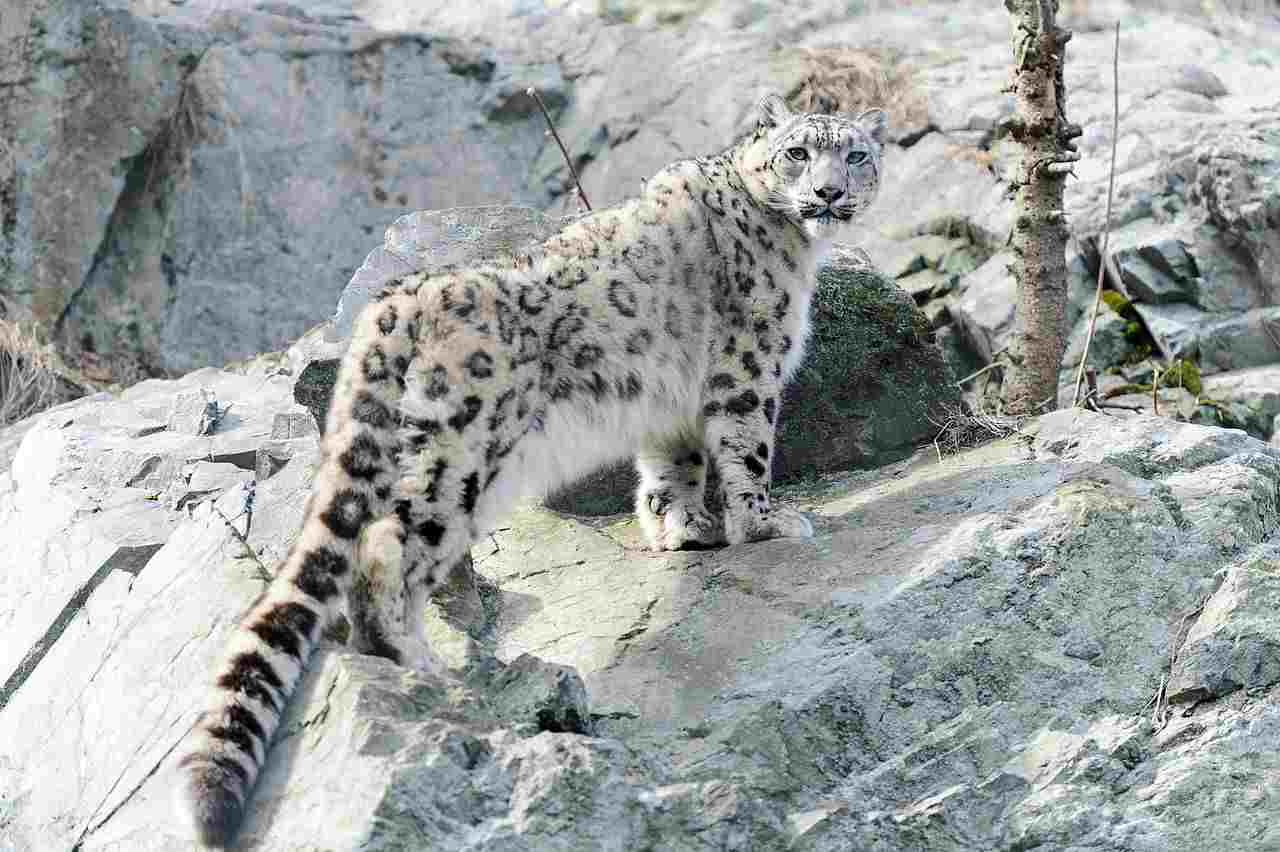
3). Solitary, Elusive Behavior
Snow leopards are known for their solitary and elusive behavior, which is one of the key reasons why they have no natural predators. These magnificent creatures prefer to roam alone in their vast territories, spanning hundreds of square kilometers. This solitary lifestyle makes it challenging for other predators to locate and prey upon them.
The solitary nature of snow leopards is a result of their adaptation to the harsh and remote mountainous regions they inhabit. They have evolved to be self-reliant hunters, relying solely on their own skills and instincts to survive. By avoiding social interactions, snow leopards minimize the risk of encountering potential predators.
Their elusive behavior further enhances their ability to avoid predation. Snow leopards are masters of stealth, moving silently and blending seamlessly into their surroundings. Their thick, spotted fur provides excellent camouflage against the rocky terrain and snow-covered landscapes, making them almost invisible to both prey and potential predators.
Snow leopards are also highly agile and nimble, capable of navigating the treacherous slopes and cliffs of their habitat with ease. Their powerful hind legs allow them to leap across vast distances, giving them an advantage in escaping from potential threats. Their ability to traverse such challenging terrain adds another layer of protection against predators.
In addition to their solitary and elusive behavior, snow leopards are primarily crepuscular, meaning they are most active during dawn and dusk. This further reduces their chances of encountering predators, as many predators are diurnal or nocturnal, with limited activity during these transitional periods.
4). Excellent Camouflage
Snow leopards possess an extraordinary ability to blend seamlessly into their surroundings, thanks to their excellent camouflage. This remarkable adaptation allows them to remain virtually invisible to both their prey and potential predators.
The thick, spotted fur of snow leopards plays a crucial role in their camouflage. The unique pattern of their fur, consisting of rosettes and spots, helps break up their silhouette and allows them to blend in with the rocky terrain and snow-covered landscapes of their habitat. This camouflage makes it incredibly difficult for other animals to spot them, giving snow leopards a significant advantage when hunting or evading predators.
The coloration of their fur also contributes to their camouflage. Snow leopards have a pale gray or light yellowish coat, which matches the color of the rocks and snow in their environment. This coloration helps them to seamlessly blend in with their surroundings, making it nearly impossible for their prey or predators to detect them.
In addition to their fur, snow leopards have other physical adaptations that aid in their camouflage. They have long, thick tails that help them maintain balance while traversing steep slopes and cliffs. These tails also serve as a form of camouflage, as they can be used to cover their bodies while resting or hiding.
Snow leopards’ camouflage is not limited to their physical appearance. They also exhibit behavioral adaptations that further enhance their ability to remain hidden. They are incredibly stealthy and move silently through their habitat, minimizing any noise that could give away their presence. Their elusive behavior and preference for solitary living also contribute to their camouflage, as they avoid drawing attention to themselves.
Are Snow Leopards Apex Predators?
Snow leopards are indeed considered apex predators in their habitat. As large felines, they hold the top position in the food chain, preying on all the lower consumers in their ecosystem. This apex predator status is a result of their unique adaptations and hunting abilities.
Snow leopards have evolved to be highly efficient hunters, capable of taking down prey much larger than themselves. Their muscular build, sharp claws, and powerful jaws enable them to overpower and kill their prey swiftly and effectively. They primarily feed on ungulates such as Himalayan ibex, argali wild sheep, and blue sheep, which are well-adapted to the harsh mountainous terrain.
Being apex predators, snow leopards play a crucial role in regulating the population of their prey species. By controlling the numbers of herbivores, they help maintain a balance in the ecosystem and prevent overgrazing of vegetation. This trophic impact has far-reaching implications for the overall health and stability of the habitat.
Furthermore, snow leopards’ status as apex predators also affords them certain advantages. They face minimal predatory threats themselves, as they have no natural predators in their habitat. Their remote and inaccessible habitat, combined with their solitary and elusive behavior, provides them with additional protection from potential threats.
Implications of the Fact that Snow Leopards are Apex Predators
1). Relatively Broad Prey Range
Snow leopards, as apex predators, have a relatively broad prey range, allowing them to feed on primary and some secondary consumers. They are known to prey on multiple trophic levels below themselves, which has important implications for the ecosystem.
By being able to target a variety of prey species, snow leopards play a crucial role in maintaining the balance of the ecosystem. Their ability to adapt to different prey availability ensures their survival even in challenging environments.
One of the key implications of snow leopards’ broad prey range is the regulation of prey populations. As apex predators, they help control the numbers of their prey species, preventing overpopulation and subsequent habitat degradation. This is particularly important in fragile mountain ecosystems where resources are limited.
Furthermore, the snow leopard’s ability to prey on multiple trophic levels below itself contributes to the overall stability of the food web. By exerting top-down control, they influence the abundance and behavior of their prey, which in turn affects the lower trophic levels. This cascading effect helps maintain the integrity of the ecosystem.
In addition to their ecological impact, the snow leopard’s broad prey range also reflects their adaptability as a species. Their diet includes a variety of species such as Himalayan ibex, argali wild sheep, blue sheep, deer, pika, and marmot. This flexibility allows them to survive in different habitats and cope with changes in prey availability.
2). Low Predation Risk
One of the key advantages of snow leopards being apex predators is their low predation risk. Due to their position at the top of the food chain, snow leopards have no natural predators, aside from humans. This lack of natural predators allows them to roam their habitats with minimal threat to their survival.
The absence of natural predators is an important implication of snow leopards’ apex predator status. It means that they do not have to constantly be on guard against potential threats, allowing them to focus on hunting and other essential activities. This freedom from predation risk contributes to their overall success as a species.
Without the constant pressure of predation, snow leopards are able to maintain a relatively stable population size. They do not have to allocate significant energy and resources to defending themselves against predators, which allows them to allocate more resources to reproduction and survival. This contributes to the long-term viability of the snow leopard population.
In addition to their low predation risk, snow leopards also benefit from their solitary and elusive behavior. They are highly adapted to their remote mountainous habitats, where they blend in seamlessly with their surroundings. Their excellent camouflage makes it difficult for potential predators or prey to spot them, further reducing their predation risk.
3). Significant Trophic Impact
An implication of the fact that snow leopards are apex predators is their significant trophic impact on the ecosystem. As top predators, snow leopards play a crucial role in maintaining the balance and health of their habitat.
One of the ways snow leopards have a significant trophic impact is through a phenomenon known as cascading effects. Being at the top of the food chain, any changes in the snow leopard population can have ripple effects throughout the ecosystem. For example, if the snow leopard population were to decline, it would result in an increase in the population of their prey species, such as Himalayan ibex and argali wild sheep. This, in turn, could lead to overgrazing and depletion of vegetation, impacting other herbivores and even altering the landscape.
Furthermore, snow leopards also regulate the population of smaller predators and mesopredators in their habitat. By preying on animals like pika and marmot, snow leopards help control their populations, preventing them from becoming overabundant and causing imbalances in the ecosystem. This regulation of predator populations helps maintain the overall biodiversity and stability of the ecosystem.
In addition to their direct impact on prey and predator populations, snow leopards also influence the behavior and distribution of other species in their habitat. The presence of snow leopards can create a “landscape of fear” where other animals modify their behavior to avoid areas where snow leopards are known to frequent. This can lead to changes in the spatial distribution of prey species, which can have cascading effects on the entire food web.
Generally, the significant trophic impact of snow leopards as apex predators is essential for maintaining the ecological balance in their habitat. Their presence helps regulate prey and predator populations, prevent overgrazing, and shape the behavior and distribution of other species.
Other Apex Predators in the Snow Leopard’s Habitat
Other apex predators within an around the ecoregion occupied by snow leopards are; Himalayan wolf, Himalayan falcon, Eurasian lynx, and Bengal tiger.
1). Himalayan Wolf
The Himalayan Wolf is an apex predator that shares the same ecoregion as snow leopards. This wolf primarily feeds on a variety of prey, including Himalayan blue sheep, musk deer, and Himalayan tahr. It is mostly found in the high-altitude regions of the Himalayas, where it has adapted to the harsh mountainous terrain.
The interaction between the Himalayan Wolf and the snow leopard is complex. While both species are top predators in their respective niches, they have different hunting strategies and prey preferences. The snow leopard tends to target larger ungulates like ibex and argali wild sheep, while the Himalayan Wolf focuses on smaller prey.
In some cases, the Himalayan Wolf may scavenge on snow leopard kills, taking advantage of the snow leopard’s hunting success. However, direct interactions between the two predators are relatively rare. They tend to avoid each other due to differences in behavior and habitat preferences.
The presence of the Himalayan Wolf in the same ecoregion as snow leopards highlights the biodiversity and ecological richness of these mountainous regions. Both predators play important roles in maintaining the balance of the ecosystem, with the snow leopard being an apex predator and the Himalayan Wolf occupying a slightly lower trophic level.
2). Himalayan Falcon
The Himalayan Falcon is another apex predator that shares the same ecoregion as snow leopards. This magnificent bird of prey is known for its incredible speed and agility in the air. It primarily feeds on small to medium-sized birds, such as pigeons, partridges, and snowcocks. The Himalayan Falcon is mostly found in the high-altitude regions of the Himalayas, where it soars through the skies in search of its next meal.
In the same ecoregion as snow leopards, the Himalayan Falcon and the elusive cat have a fascinating interaction. While the snow leopard is a ground-dwelling predator, the Himalayan Falcon dominates the skies above. The falcon’s aerial hunting prowess allows it to target birds that may be out of reach for the snow leopard. This division of hunting territories reduces competition between the two predators and ensures a more balanced ecosystem.
The Himalayan Falcon’s presence in the snow leopard’s habitat highlights the diversity of predators in these mountainous regions. Each predator has its own niche and prey preferences, contributing to the overall stability of the ecosystem. The falcon’s ability to control bird populations helps maintain a healthy balance in the avian community, which indirectly impacts the snow leopard’s prey availability.
3). Eurasian Lynx
The Eurasian Lynx is another apex predator that shares the same ecoregion as snow leopards. This elusive and majestic cat is known for its stealth and hunting prowess. It primarily feeds on a variety of prey, including deer, hares, and small mammals. The Eurasian Lynx is mostly found in the dense forests and mountainous regions of its habitat.
In the same ecoregion as snow leopards, the Eurasian Lynx and the snow leopard have a complex interaction. While both are solitary and elusive predators, their hunting territories may overlap. However, due to differences in size and preferred prey, direct competition between the two predators is minimal. The Eurasian Lynx tends to target smaller prey species, while the snow leopard focuses on larger ungulates.
The presence of the Eurasian Lynx in the snow leopard’s habitat adds to the biodiversity and ecological balance of the region. Each predator plays a crucial role in regulating prey populations and maintaining a healthy ecosystem. The coexistence of these apex predators highlights the intricate web of interactions that shape the natural world.
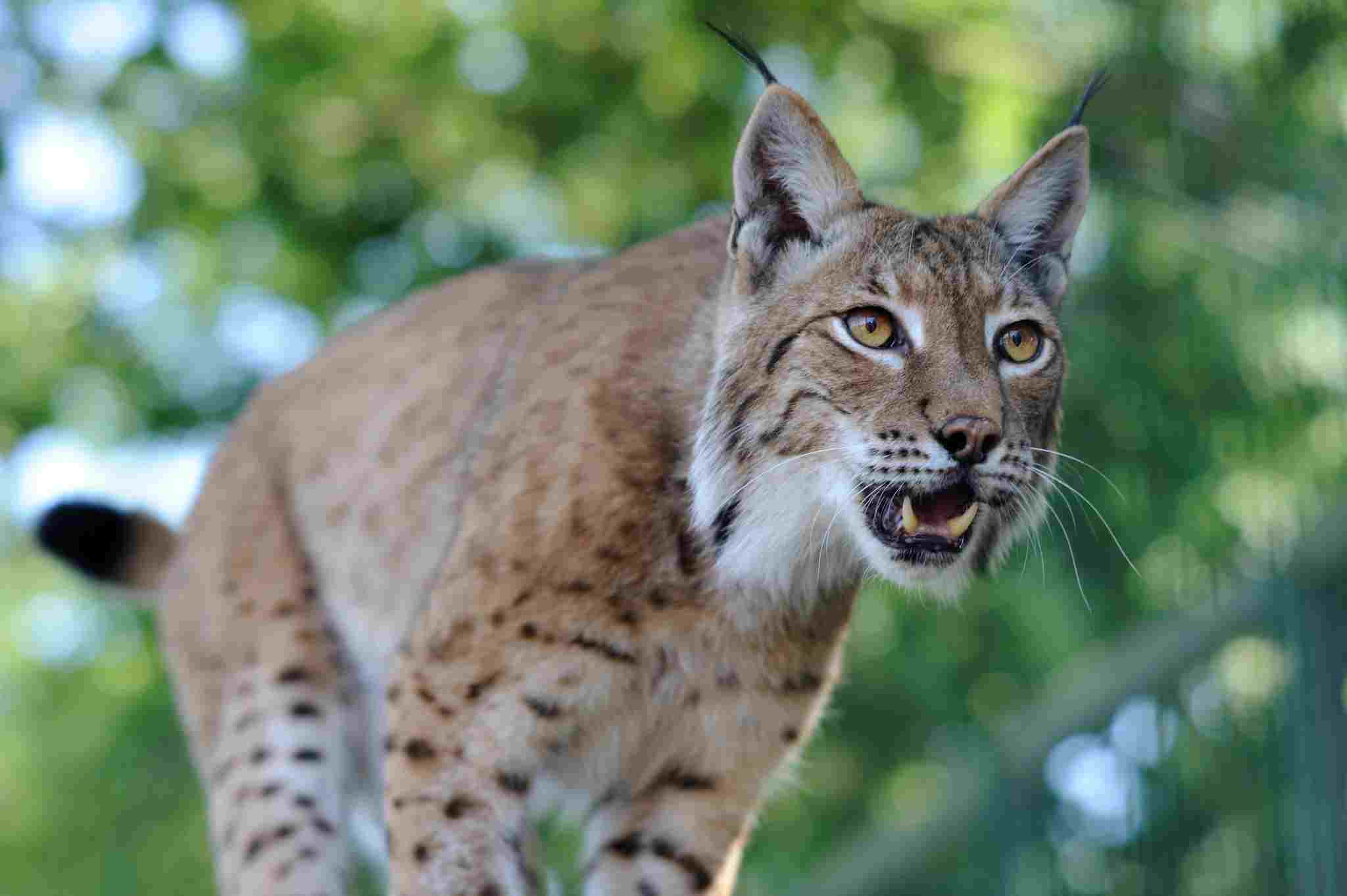
4). Tigers
Tigers, including the Bengal tiger and the bleached tiger, are apex predators that inhabit the same ecoregion as snow leopards. While they are not commonly found in the immediate environment of snow leopards, they can be found in close surroundings at lower elevations. Tigers primarily feed on a variety of prey, including deer, wild boar, and smaller mammals.
In the same ecoregion, tigers and snow leopards have a limited interaction due to differences in habitat preferences and hunting strategies. Tigers are mostly found in dense forests and grasslands, while snow leopards inhabit the rugged mountainous regions. However, there have been occasional reports of snow leopards and tigers sharing overlapping territories.
The coexistence of tigers and snow leopards in the same ecoregion highlights the complexity of predator dynamics and the importance of maintaining a balanced ecosystem. Both species play a crucial role in regulating prey populations and contributing to the overall biodiversity of the region.
While tigers are not direct competitors with snow leopards for prey, their presence can indirectly impact the snow leopard population. As apex predators, tigers exert top-down control on the food chain, which can influence the availability of prey species for snow leopards. Understanding the interactions between these apex predators is essential for conservation efforts and ensuring the long-term survival of both species.
What are Snow Leopards’ Prey
Snow leopards’ prey include; Himalayan ibex, Argali white sheep, blue sheep, deer, pika, an marmot.
1). Himalayan Ibex
The Himalayan Ibex is a prey of the snow leopard, playing a crucial role in the predator-prey dynamics of their habitat. These agile and sure-footed animals inhabit the steep and rocky terrain of the Himalayas, making them a challenging target for the snow leopard. With their impressive climbing abilities, the Himalayan Ibex can navigate the treacherous slopes with ease, often seeking refuge in inaccessible areas.
The Ibex’s adaptation to their environment allows them to evade the snow leopard’s pursuit. Their long, curved horns serve as a defense mechanism, enabling them to fend off potential attacks. Additionally, their keen senses and ability to detect predators from a distance provide them with an advantage in avoiding confrontations.
As a primary prey species, the Himalayan Ibex plays a vital role in sustaining the snow leopard population. Their abundance and distribution influence the snow leopard’s hunting behavior and territorial range. The availability of Ibex populations determines the snow leopard’s access to food resources, affecting their overall survival and reproductive success.
Conservation efforts aimed at protecting the Himalayan Ibex are crucial for the long-term survival of both species. By safeguarding the Ibex’s habitat and ensuring their population remains stable, we can indirectly contribute to the preservation of the snow leopard.
2). Argali Wild Sheep
Argali wild sheep are another important prey species for snow leopards in their habitat. These majestic animals are native to the high-altitude regions of Central Asia, including the Himalayas. With their large size and impressive horns, argali sheep are formidable opponents for any predator, including the snow leopard.
The argali’s ability to navigate the rugged terrain and adapt to extreme weather conditions makes them well-suited for survival in their harsh environment. Their long, curved horns serve as a defense mechanism against potential threats, while their keen senses help them detect predators from a distance.
Snow leopards rely on the argali sheep as a significant food source, especially during the winter months when other prey may be scarce. The availability and distribution of argali populations influence the snow leopard’s hunting behavior and territorial range. Protecting the argali’s habitat and ensuring their population remains stable is crucial for the long-term survival of both species.
3). Blue Sheep
Blue sheep, also known as bharal, are a key prey species for snow leopards in their habitat. These agile and sure-footed animals are found in the high-altitude regions of the Himalayas and other mountainous areas in Central Asia. Blue sheep have adapted to the harsh conditions of their environment, with their thick woolly coats providing insulation against the cold.
Their ability to navigate steep slopes and rocky terrain makes them a challenging target for predators, including the snow leopard. Blue sheep are known for their exceptional jumping ability, which allows them to escape from predators by leaping across cliffs and narrow ledges.
Snow leopards rely on blue sheep as a vital food source, particularly during the winter months when other prey may be scarce. The population and distribution of blue sheep influence the snow leopard’s hunting behavior and territorial range. Protecting the habitat of blue sheep is crucial for ensuring the survival of both species.
Blue sheep play a significant role in the ecological balance of the region, as they are an important prey species for other predators as well. Their presence supports the overall biodiversity of the mountain ecosystem. Conservation efforts focused on preserving the habitat and population of blue sheep are essential for maintaining the balance of the snow leopard’s ecosystem.
4). Deer
Deer are another important prey species for snow leopards in their habitat. These herbivorous animals are found in various regions where snow leopards reside, including the Himalayas and other mountainous areas. Deer have adapted to their environment by developing keen senses and agile movements, allowing them to detect and evade predators.
Snow leopards rely on deer as a significant food source, especially during times when other prey may be scarce. The population and distribution of deer influence the snow leopard’s hunting behavior and territorial range. Protecting the habitat of deer is crucial for ensuring the survival of both species.
Deer also play a vital role in the ecosystem as they contribute to the dispersal of seeds through their feeding habits. They help maintain the balance of plant species and promote biodiversity in the region. Conservation efforts aimed at preserving the habitat and population of deer are essential for the overall health of the snow leopard’s ecosystem.
5). Pika
Pikas are small herbivorous mammals that inhabit the same regions as snow leopards, such as the Himalayas and other mountainous areas. These adorable creatures play a crucial role in the snow leopard’s diet and ecosystem.
Snow leopards rely on pikas as a source of food, especially during the summer months when other prey may be scarce. Pikas are known for their abundance in alpine meadows, where they gather and store vegetation for the winter. Their presence in these meadows attracts snow leopards, who patiently stalk and pounce on them for a meal.
The relationship between snow leopards and pikas goes beyond mere predator-prey dynamics. Pikas also contribute to the ecosystem by dispersing seeds through their feeding habits. As they forage on plants, they inadvertently transport seeds to different areas, aiding in the growth and diversity of plant species.
Conservation efforts aimed at protecting pikas are essential for the survival of snow leopards and the overall health of their habitat. By safeguarding the populations of these small mammals, we can ensure a stable food source for snow leopards and maintain the delicate balance of the ecosystem.
6). Marmot
Marmots are another important prey species for snow leopards in their mountainous habitats. These large ground-dwelling rodents are found in alpine meadows and rocky areas, providing an abundant food source for the elusive predators. Snow leopards rely on marmots for sustenance, especially during the warmer months when other prey may be scarce.
Marmots are known for their burrowing behavior, creating complex underground networks of tunnels and chambers. This makes them difficult to detect and capture, but snow leopards have adapted their hunting strategies to overcome this challenge. With their keen senses and agility, snow leopards patiently stalk and ambush marmots, using their powerful pounce to catch them by surprise.
The presence of marmots in the snow leopard’s diet not only provides a source of nutrition but also contributes to the overall balance of the ecosystem. Marmots play a role in seed dispersal, as they consume various plant species and transport seeds to different areas through their feces. This helps to maintain the diversity and regeneration of vegetation in their habitat.
Conclusion
* In conclusion, this article has explored the predators and prey of snow leopards, shedding light on the unique position of these elusive predators in their habitat. We have discussed the factors that contribute to the snow leopard’s lack of natural predators and minimal predatory threat, as well as their apex predator status and the implications it has on their ecosystem.
* Snow leopards are apex predators, meaning they are at the top of the food chain in their environment. This status is attributed to several factors, including their remote habitat, solitary and elusive behavior, and excellent camouflage. These characteristics allow snow leopards to avoid detection and minimize their predation risk.
* The fact that snow leopards are apex predators has significant implications for their ecosystem. Firstly, it grants them a relatively broad prey range, as they are not limited by competition from other predators. Snow leopards primarily prey on Himalayan ibex, argali wild sheep, blue sheep, deer, pika, and marmots. This diverse diet ensures their survival even when certain prey species are scarce.
* Additionally, being an apex predator means that snow leopards face low predation risk themselves. With no natural predators to fear, they can focus on hunting and securing their own survival. This allows them to maintain a stable population and exert a trophic impact on their ecosystem.
* While snow leopards hold the title of apex predator in their habitat, they are not the only top predators present. Other apex predators in the snow leopard’s range include the Himalayan wolf, Himalayan falcon, Eurasian lynx, and tigers. These predators play important roles in the ecosystem and contribute to the overall balance of the food web.
* In conclusion, snow leopards are apex predators with a relatively broad prey range and low predation risk. Their presence in the ecosystem has significant trophic impacts and contributes to the overall balance and biodiversity of their habitat. Understanding the predators and prey of snow leopards is crucial for conservation efforts and ensuring the long-term survival of these magnificent creatures.
* This article has provided insights into the predators and prey of snow leopards, highlighting their unique position as apex predators in their habitat. By understanding the factors that contribute to their lack of natural predators and minimal predatory threat, we can appreciate the importance of conserving these elusive creatures and their delicate ecosystem.
* Also, this article has discussed the concepts we have addressed so far. Snow leopards are apex predators with no natural predators and minimal predatory threat due to their remote habitat, solitary behavior, and excellent camouflage. Their apex predator status has implications for their prey range, predation risk, and trophic impact. Other apex predators in their habitat include the Himalayan wolf, Himalayan falcon, Eurasian lynx, and tigers. By understanding the predators and prey of snow leopards, we can gain a deeper appreciation for these magnificent creatures and the delicate balance of their ecosystem.
* This article has explored the predators and prey of snow leopards, shedding light on their unique position as apex predators in their habitat. We have discussed the factors that contribute to their lack of natural predators and minimal predatory threat, as well as the implications of their apex predator status. Snow leopards have a relatively broad prey range, face low predation risk, and have a significant trophic impact on their ecosystem. Other apex predators in their habitat include the Himalayan wolf, Himalayan falcon, Eurasian lynx, and tigers. By understanding the predators and prey of snow leopards, we can better appreciate the importance of conserving these magnificent creatures and their fragile ecosystem.
FAQs
1. Is a Snow Leopard an Apex Predator?
Yes, a Snow Leopard is considered an apex predator in its habitat. As an apex predator, it holds the highest position in the food chain and has no natural predators of its own. This means that Snow Leopards are at the top of the ecological pyramid in their ecosystem.
Snow Leopards’ status as apex predators is due to several factors. Firstly, their remote and rugged habitat provides them with a level of protection from potential predators. Secondly, their solitary and elusive behavior makes it difficult for other animals to locate and prey upon them. Additionally, Snow Leopards possess excellent camouflage, allowing them to blend seamlessly into their surroundings and avoid detection.
Being an apex predator has significant implications for Snow Leopards. They have a relatively broad prey range, including Himalayan Ibex, Argali Wild Sheep, Blue Sheep, Deer, Pika, and Marmot. They also face low predation risk themselves, which contributes to their survival and population stability. Furthermore, Snow Leopards have a significant trophic impact on their ecosystem, regulating prey populations and maintaining a balanced ecosystem.
2. Are Snow Leopards Aggressive to Other Animals?
Snow leopards are not typically aggressive towards other animals unless they feel threatened or are defending their territory or young. They are known for their solitary and elusive behavior, preferring to avoid confrontation whenever possible. Snow leopards are highly adapted to their environment, relying on stealth and camouflage to hunt their prey rather than engaging in direct aggression.
Their preference for avoiding conflict is also influenced by their remote and rugged habitat, which provides them with ample space to roam and reduces the likelihood of encounters with other animals. Additionally, snow leopards have evolved to be efficient hunters, using their powerful forepaws and sharp claws to capture their prey without the need for aggressive behavior.
3. Are Snow Leopards Stronger than Wolves?
Snow leopards are not necessarily stronger than wolves, but they possess unique adaptations that allow them to thrive in their environment. With their powerful forepaws and sharp claws, snow leopards can effectively capture their prey without relying heavily on physical strength. These adaptations enable them to navigate the rugged terrain of their habitat and make precise, stealthy movements during hunting.
Unlike wolves, snow leopards are solitary and elusive animals, preferring to avoid direct confrontation whenever possible. This behavior, combined with their excellent camouflage, helps them to remain undetected by potential predators or threats. While wolves are known for their pack hunting strategies and cooperative behavior, snow leopards have evolved to be efficient hunters on their own. Each species has its own unique set of skills and adaptations that allow them to thrive in their respective environments.
4. Why are Snow Leopards Endangered?
Snow leopards are facing numerous threats that have led to their endangered status. One of the main factors is climate change, which is causing the loss of their natural habitat. As temperatures rise, the snow leopards’ mountainous habitat is shrinking, making it difficult for them to find suitable prey and establish territories.
Habitat loss is another significant threat to snow leopards. Human activities such as mining, agriculture, and infrastructure development are encroaching on their habitat, fragmenting their populations and limiting their access to food and mates.
Poaching is also a major concern for snow leopards. Their beautiful fur and body parts are highly valued in the illegal wildlife trade. Despite conservation efforts, the demand for snow leopard products continues to drive poaching activities.
5. Where do Snow Leopards Live?
Snow leopards live in the mountain range of Asia, specifically in the Himalayas. This region provides the perfect habitat for these elusive predators. The rugged terrain and extreme cold temperatures make it difficult for other animals to survive, but snow leopards have adapted to thrive in this environment.
They are found in countries such as India, Nepal, Bhutan, China, and Mongolia, where they roam across vast territories in search of prey. The high altitudes and steep slopes of the Himalayas offer snow leopards the advantage of being able to spot their prey from a distance and launch stealthy attacks. Their ability to survive in such harsh conditions is a testament to their resilience and adaptability.
6. Are Snow Leopards Predators or Prey?
Snow leopards are primarily predators in their natural habitat. They are highly skilled hunters, capable of taking down prey much larger than themselves. With their powerful legs and muscular bodies, snow leopards are well-equipped to chase and capture their prey. They mainly feed on Himalayan ibex, argali wild sheep, blue sheep, deer, pika, and marmot.
While snow leopards are formidable predators, they rarely become prey themselves, especially when it comes to natural predators. Due to their elusive behavior and excellent camouflage, they are able to avoid detection by other animals. Additionally, their remote habitat and solitary nature further reduce their risk of predation.
However, it is important to note that snow leopards can occasionally fall victim to human activities such as poaching and habitat destruction. These threats have contributed to their endangered status and highlight the need for conservation efforts to protect these magnificent predators.
7. Are Leopards Top Predators?
Leopards are indeed considered top predators in their respective habitats. With their stealthy nature and powerful hunting skills, leopards have earned their place at the top of the food chain. They are highly adaptable and can thrive in a variety of environments, from dense forests to open grasslands.
Leopards possess a remarkable ability to stalk and ambush their prey, which includes a wide range of animals such as antelope, deer, monkeys, and even smaller predators like hyenas and jackals. Their strong jaws and sharp teeth enable them to take down prey efficiently.
In addition to their hunting prowess, leopards play a crucial role in maintaining the balance of ecosystems. As apex predators, they help regulate the populations of their prey species, preventing overgrazing and ensuring the overall health of the ecosystem.
8. Why are Snow Leopards Called Ghosts of the Mountains?
Snow leopards are often referred to as the “Ghosts of the Mountains” due to their extremely elusive nature and excellent camouflage. These felines inhabit the rugged and remote mountainous regions of Central Asia, making them incredibly difficult to spot and study. Their pale gray fur, speckled with dark spots, blends seamlessly with the rocky terrain, allowing them to remain hidden from both predators and prey.
The nickname “Ghost of the Mountains” also reflects the mysterious and ethereal presence of snow leopards in their habitat. Their silent movements and ability to vanish into the landscape give them an almost supernatural quality. This elusive nature has captivated the imaginations of people around the world, further adding to their mystique.
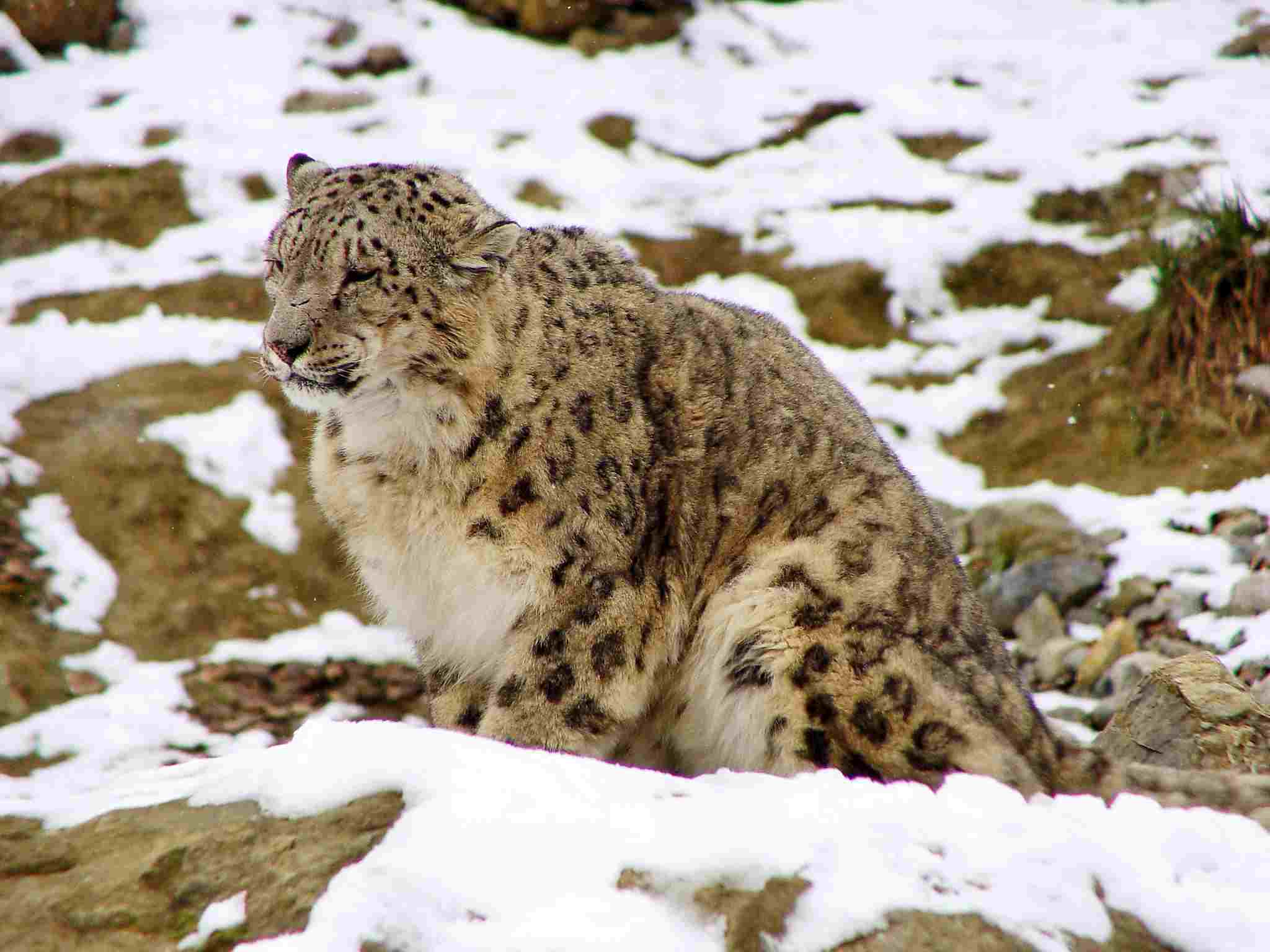
9. What Do Snow Leopards Eat?
Snow leopards have a diverse diet that consists of various animal prey, including ibex, blue sheep, marmots, as well as carrion. These elusive predators are highly adapted to their mountainous habitat, allowing them to hunt and survive in harsh conditions.
Snow leopards primarily target large ungulates such as Himalayan ibex and argali wild sheep, which provide them with substantial nutrition. They are also known to prey on smaller mammals like blue sheep, deer, pika, and marmots. Additionally, snow leopards scavenge on carrion when the opportunity arises, making use of any available food source.
Their ability to consume a wide range of prey species contributes to their status as apex predators in their ecosystem. By regulating the population of herbivores, snow leopards play a crucial role in maintaining the balance of their fragile mountain ecosystems.
